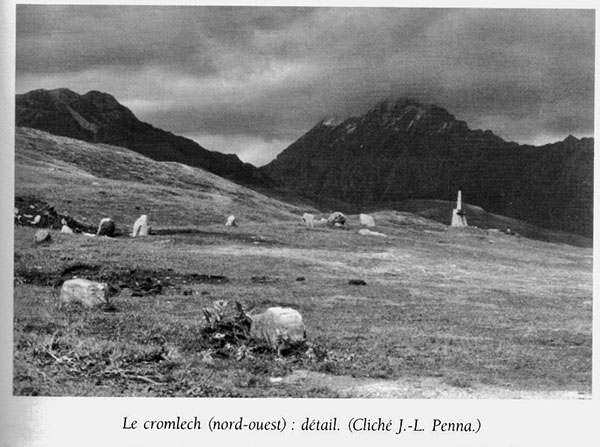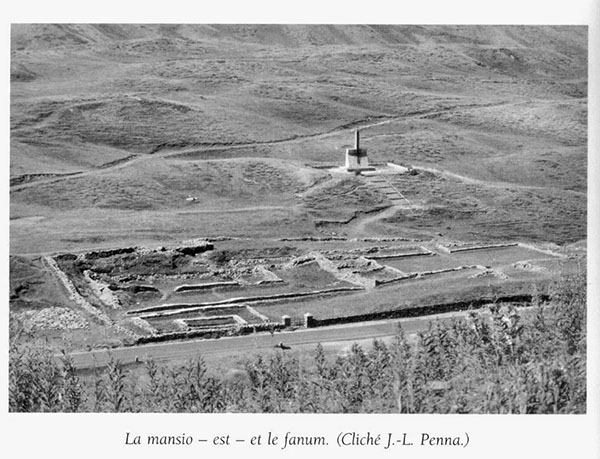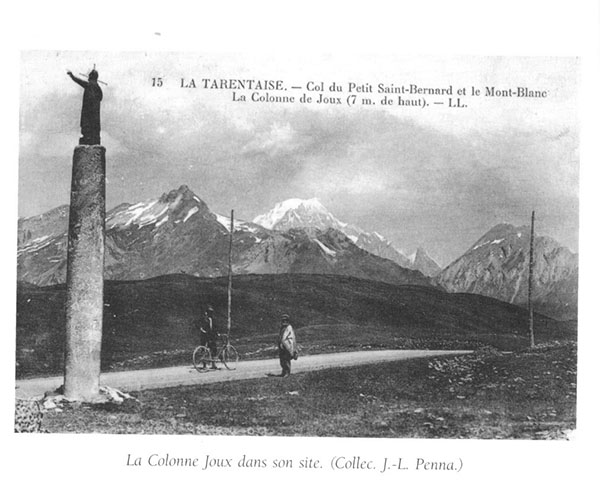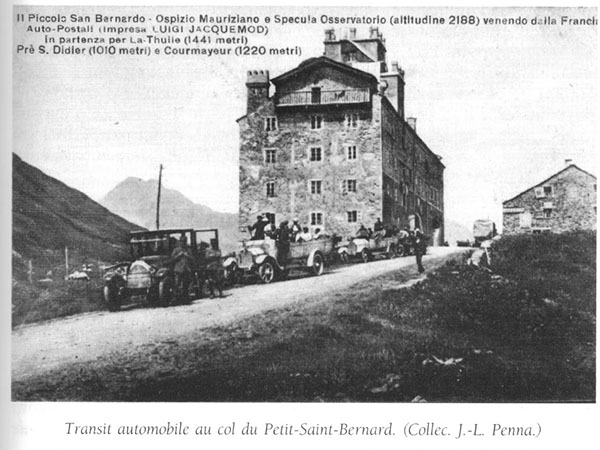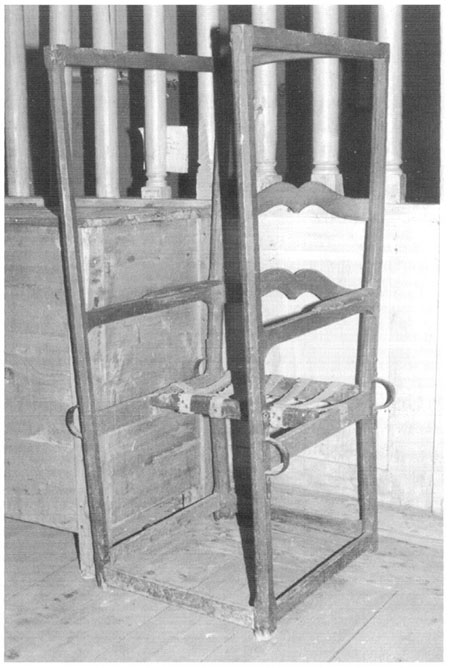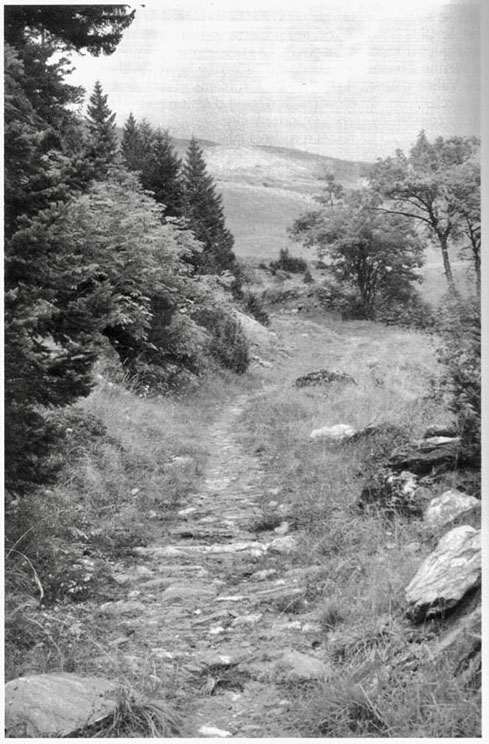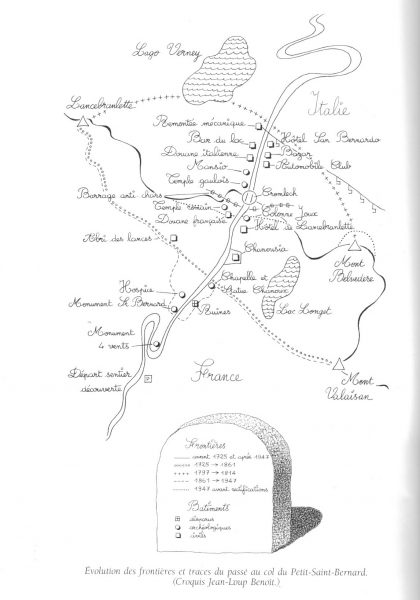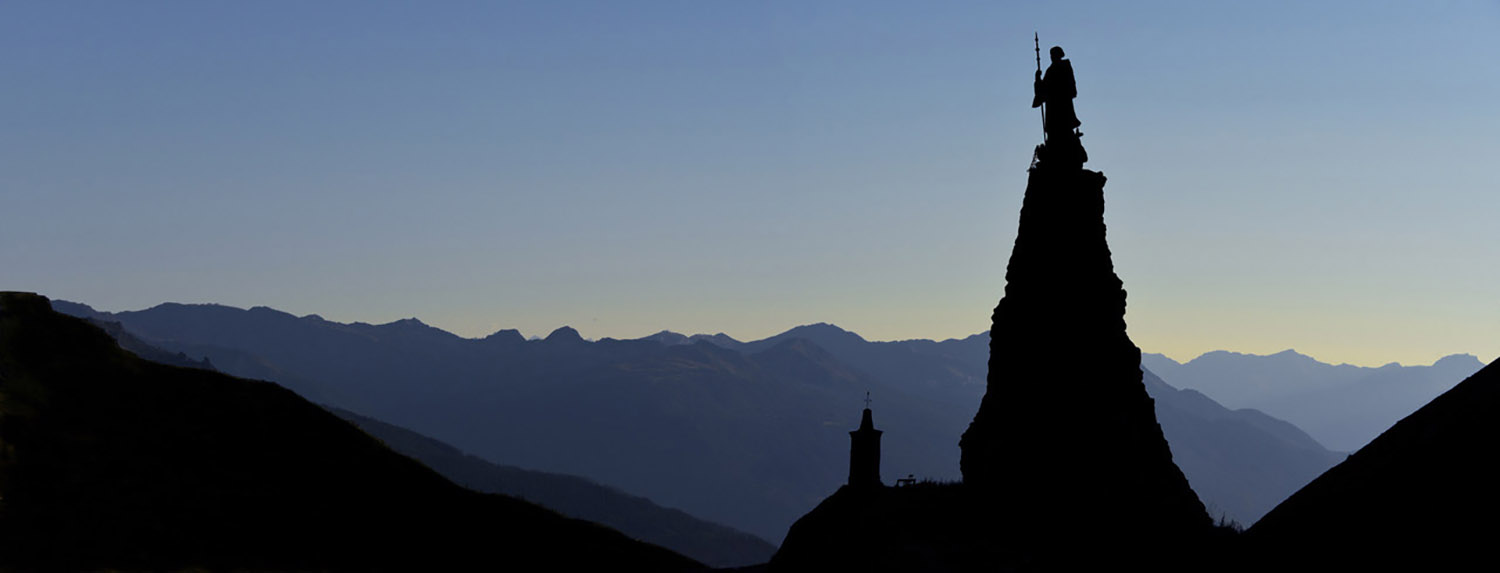
The Pass through the ages
Since antiquity, the pass has seen a large number of travellers!
Already the ancient populations salasses (from the Aosta Valley) and ceutrones (from Tarentaise), at the origin of pastoralism, gathered in this place and would have raised a Cromlech, a curious stone circle 70 m in diameter, straddling the border today.
The Romans built a way there, worshiped Jupiter, erecting a column, surmounted by a statue of the god, they built a first inn: La Mansio. Hannibal and his troops would have crossed this pass.
In the High Middle Ages, Saint Bernard de Menthon had a hospice built there to welcome travellers.
Petit-Saint-Bernard was the scene of the Franco-Savoyard wars, from Louis XIV to the Revolution. It was also the site of the “Hundred Hours War” in 1940 and the last battles on national soil during the Liberation, in 1944-1945.
Today, the pass has become a tourist passage with multiple attractions: discovery of archaeological remains or historical and old legends; summer excursions through mountain pastures, rocks and glaciers; Downhill skiing and cross-country skiing in the two adjoining stations that make up the Espace San Bernardo: La Thuile and La Rosière de Montvalezan.
From the imperial way to the national road
- The ancient Roman road dates from 2 AD, it was maintained on its route until 1866, passing through St Germain on the right bank of the recluse . There were many exchanges on this route: livestock, goods (including active contraband), immigrants, seasonal workers, peddlers and craftsmen, châtelains (transported by porters inhabitants of St Germain), military troops…< /li>
- 1853: a road project on the French side is determined: Ribbon 6m wide, maximum slope of 6% to accommodate the passage of stagecoaches.
- 1858: the Séez-La Rosière section is completed.
- 1866: the road on the French side is completed.
- 1873: the road completed on the Italian side.
- 1897: Félix Faure inaugurates the RN 90.
- July 14, 1905: the Count of Menthon crossed the pass in a vehicle.
It was only with the development of the automobile that the new road flourished: 52,000 vehicles passed through it in 1960.
This road, open from the beginning of June to the end of October, allows the junction of the 2 regions and allows the pass to be an attractive place for summer tourism.
Shifts of the border over time
- until 1725: limit between Ceutron and Salassian peoples, it is the limit of division of the waters, of 2 peoples, of 2 mountain communities who share mountain pastures.
- 1725: new pastoral border, defined following a judgment which moved the border on the French side to halfway between the hospice and the Joux column.
- 1797: French Revolution, a temporary border is set up (contradictions in the book)
- 1814: restoration of the duchies of Savoy and Aosta. We return to the 1725 border.
- 1861: Savoy was attached to France in 1860. The customs buildings were set up. Napoleon III concedes a strip of land with the hospice and its outbuildings on the territory destined to become Italian.
- 1947: restoration of the border on the watershed line, after some detailed negotiations between elected officials on both sides.
Friendships between residents
Little St Bernard closely unites 2 valleys sisters, Valley of Aosta and Tarentaise, and 2 peoples brothers from Salasses and Ceutrons. A history of almost 2000 years united the 2 peoples. On one side or the other, the inhabitants like to cross the pass in summer to get away from it all or to visit their families.
The French language, which was the language of the Valdotains before the Second World War, is still widely spoken in Val d’Aoste, and constitutes for them a pride and a symbol of their autonomy.


